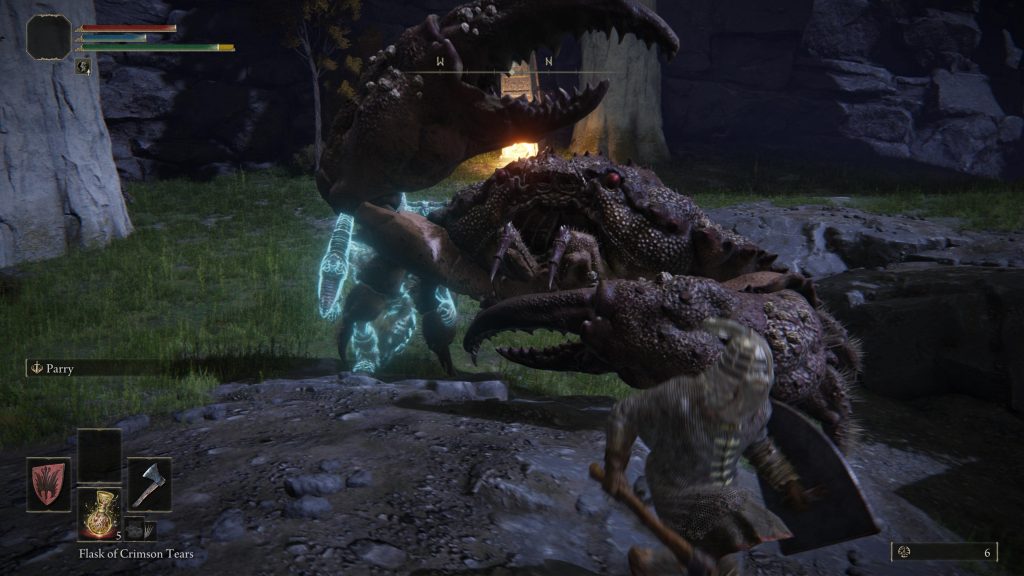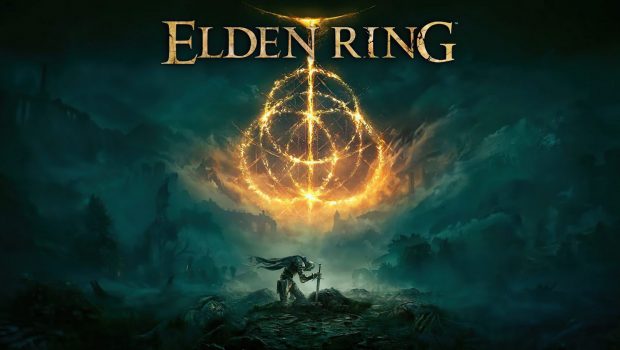Elden Ring PS5 review – A grace study
Summary: A must play for action-RPG fans looking for deep combat systems and an expansive open-world that truly rewards exploration.
4.8
A grace study
Elden Ring, the latest in a beloved series of action role-playing games by FromSoftware, is astoundingly ambitious, content-rich and infuriatingly fun to fail at, and try again.
With a shift to open-world design instead of intricate dungeon zones of yesteryear, Elden Ring carried a lot of hype on its shoulders to meet the expectations of both a dedicated returning fan-base and a new generation of gamers who have come to expect bigger virtual playgrounds to explore, possibilities to experiment with, and more things to do.
Elden Ring’s brand new epic fantasy setting not only accommodates player choice, but rewards exploration in its sheer scale and scope, and brings a fresh new layer of challenge and mystery – and more than earns its keep among the beloved Souls games that came before.
For newcomers, Elden Ring is a third person action-based RPG with an emphasis on real-time combat, player-led exploration and in-depth stat building systems. You choose the attributes, appearance, and class of your blank slate character from a diverse range of customisation options before being let loose in a mysterious fantasy world to find your way and experiment with the many styles of play that fits best – back-stabbing assassin, nimble archer, glass cannon spellcaster, and everything in between. From a hub area called the Roundtable Hold, you’re tasked with exploring a series of zones and a sprawling open-world in an order you choose to beat progressively difficult enemies, bosses and environments, collect loot found in the world, level up by spending runes gathered from fallen foes, and improve your character to take on the next set of challenges better, all while unraveling a largely hands-off story in single-player, or multiplayer for parts of the game. It’s also a game where you’ll die, and have to try again. A lot.
For returning fans, Elden Ring is very much a continuation of FromSoftware’s established Souls series, which can be a good or bad thing depending on your expectations. Upfront, you have Sites of Grace, Flasks of Tears and Runes that are your Bonfires, Estus and Souls in function. Further in you’ll find many iconic weapons from the series’ storied history available alongside newer tools of destruction, and deeper yet are bigger changes, such as the new Ashes of War, which expands the old Weapon Arts system by allowing players to replace the skills and damage properties of weapons with new ones and even duplicate the same skill to use it again elsewhere, the ability to crouch and stealthily take out enemies without alerting the larger hordes, and the crafting system that lets you make consumable goods from materials you gather in the field – with the proper recipes.
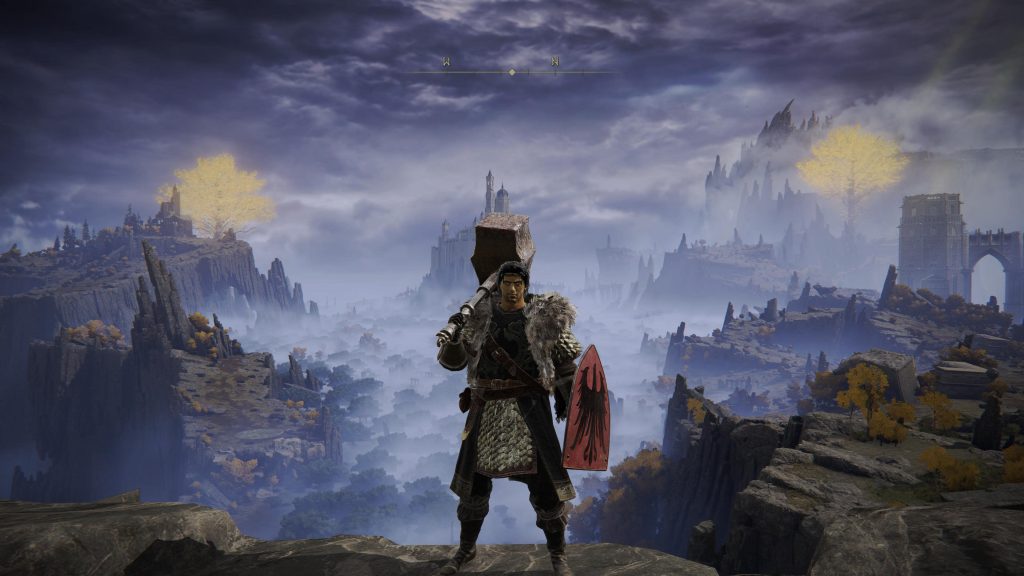
In my pre-launch preview, I was struck by how similar it is to Dark Souls 3 in its animations, controls and stats (STR, DEX, etc), but the full game’s high-fantasy setting, bizarre backdrops, enigmatic storytelling and punishing unpredictability feels fresh enough while being comfortably familiar. The actual combat is as nail-bitingly tough as ever, with every kill well-earned, and character survival not guaranteed whenever you get a little too cocky with a spear-thrust or lazily mis-time a parry. Death still means losing your collected runes and having one chance to get it back, and while I lost often, I never felt like the AI was unfair or the risk not worth it. Eventually learning from my mistakes and overcoming a boss’s bullshit surprise sweep attack (I’m looking at you, Godrick) was often more rewarding than the actual loot. The amount of offensive and defensive options at your disposal in Elden Ring, from slow but thunderous warhammers to dual daggers to classic sword and board and the more complex sorcery and spell trees is dizzying in depth, and adds an immediate incentive for another playthrough to see what you miss out on.
Say one thing for Elden Ring, though, say it’s far more forgiving on your play-time. You can properly jump now, for instance, meaning less awkwardly timed rolls to your death by the cliffside (but still a lot) and more options for fighting. Stakes of Marika act as handy checkpoints to make the experience of dying fifty times and having to get back to the boss that little bit less frustrating. Summoning Pools send your interest in co-op multiplayer within the zone for more streamlined match-making (you can still leave a classic summon and invasion signs on the ground, purists). Oh, and, you can change your character’s appearance later in the game whenever you want; no need to spend (and waste) hours in the introduction getting things perfect like I did! All these new quality-of-life features are great, and I don’t know how I played without their convenience before.
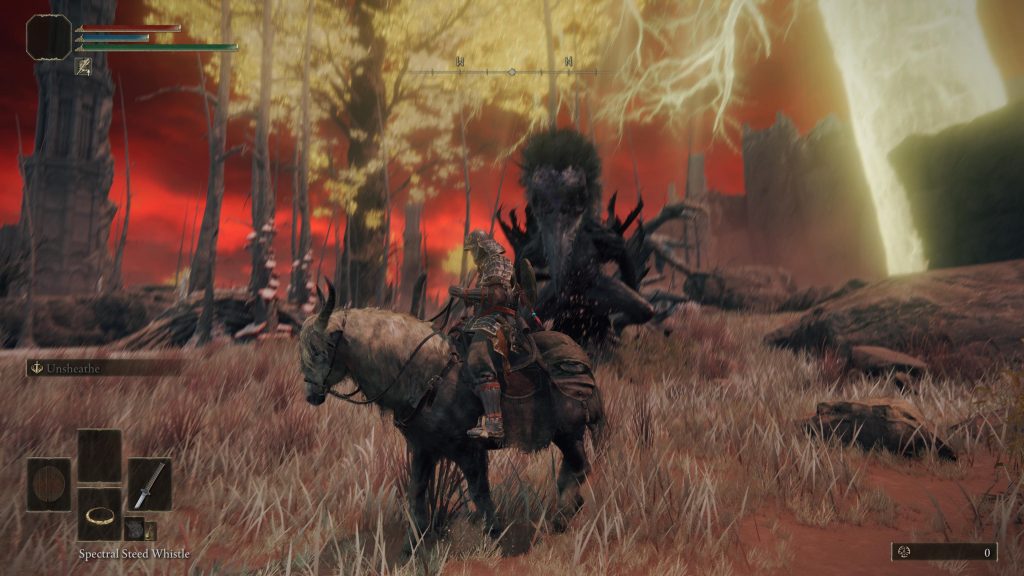
The most significant new gameplay addition is your spectral mount, Torrent. Yes, you can fight and ride on horseback in a FromSoftware game, and I’m thankful; The Lands Between is huge, filled with misty valleys, stormy castles, facinorous forests and hellish hinterlands, to name a few – and that’s just the open-world sections. I stumbled, in awe, through everything from classic gothic castles and dungeons to cosmic dream realms to blood-stained hell plain nightmares to ethereal Tolkien-esque valleys right out of a water painting. I found every corner, covered in fog until you discover each region’s map, filled with easter eggs, secrets, NPCs, monsters, and general activity. Early on, I came across a raging battle between undead warriors and goblin tribes that had nothing to do with me, and took an unexpected detour to an otherworldly realm where it was clear I wasn’t meant to be there so early, but I could explore it anyway if I wanted to.
And as much as I love open-world games, many developers don’t quite nail that balance of expansive maps and joyful exploration with consistently quality content and true player freedom. Not for a lack of trying, of course, it’s just damn hard to keep every square inch interesting when a player can travel however they like. But from the moment the short (optional) tutorial is over, Elden Ring rewarded me for pursuing my curiosity and riding off the critical path 9 times out of ten with some neat discovery, or some form of subtle environmental storytelling. That sort of freedom in approach, while present in preceding games, is doubly impressive given Elden Ring’s sheer increase in scale of places to travel to, and content – both main and optional – to conquer. You can still fast-travel, but I found myself constantly losing track of time wandering everywhere. The map starts out linear, but the more areas you find, the more it expands in scope and depth.
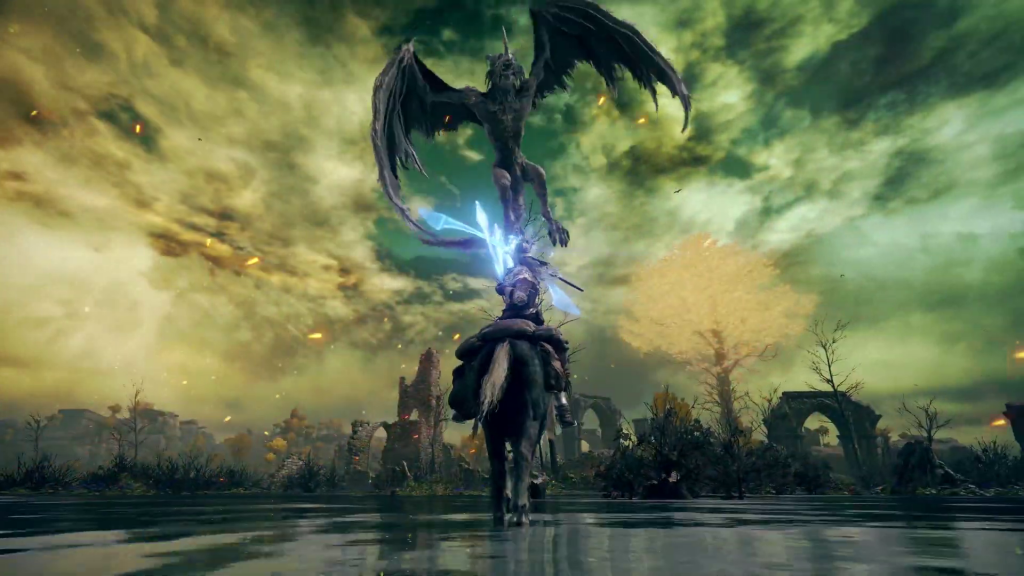
While exploring and scavenging through the open-world brings a new form of fun and satisfying rewards, that addictive loop of discovering and conquering more hand-crafted zones remains intact in Elden Ring. There’s around six main areas and dozens of castles and catacombs to conquer, each housing an abundant variety of weapons, armour, consumable items and now crafting materials to come across after defeating an enemy or successfully navigating a zone. The level of dedication I put in to hunt down each zone’s mobs to farm for unique loot while experimenting with build variety and customizing my Tarnished’s equipment bordered on insanity. The enemy design is on par with Bloodborne and the original Dark Souls in terms of sheer creepiness, infuriating challenge and outright terror; there’s everything from undead knights and wolves to Cthulhu-esque creatures to giant wild bears, crabs and freaking lobsters. Yes, if you hate sea creatures and googly eyes like I do, prepare to be shocked.
One of my favourite things about FromSoftware titles is their interconnected world design that sees one area flow into another in ways that make sense even in such surreal fantasy settings; such as seeing the depths of Blighttown from atop Firelink Shrine, and vice versa, in Dark Souls. The grander, larger, open-world approach of Elden Ring’s Lands Between, to my delight, does not dilute this aspect at all, with the main zones flowing into each other nicely. Other, more optional and, frankly, otherworldly areas shake things up nicely while adhering to the lore.
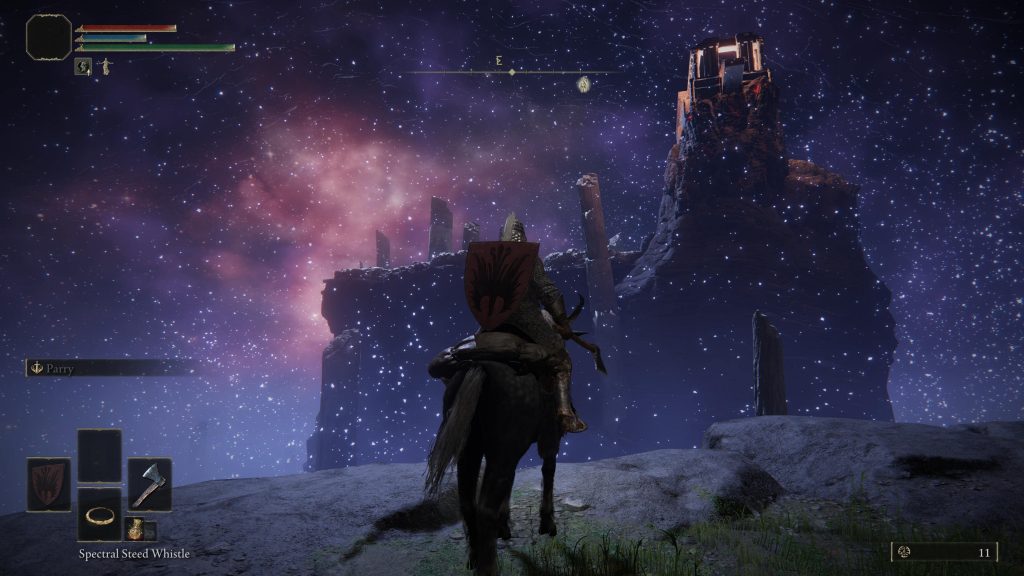
As for the narrative setup, Elden Ring is dense, cryptic yet intriguing as it dangles small pieces of lore and vague answers in front of you. In this world, the titular Elden Ring was shattered by a group of corrupted demigods who have taken its shards for power, plunging the realms into chaos; your character is an exile, or ‘Tarnished’ that is summoned to recover all the Great Runes and save the day as the new Elden Lord. The story is full of high fantasy tropes; a grand, sweeping tone, melancholy moments, bad-ass names of past heroes and intriguingly name-dropped legends, and while I wish I could gush the same about it (with worldbuilding by George R.R. Martin of A Song of Ice and Fire fame), as the gameplay, it can be admittedly hard to follow if you aren’t 100% focused, or engaging with every bit of content there is. Not everyone has 100+ hours, understandably.
Most of the narrative answers on offer will come very slowly, uncovered through careful inspection of the world or piecing together comments from NPCs or after beating a boss. There are more cutscenes in between the action and boss fights than previous games, making it slightly more cinematic and friendly for newcomers, but the dialogue remains flowery and the characters unhelpful in explaining things as ever. If you like your video game storytelling like a puzzle, this will be up your alley (as it was to my preference), but if you’re a little more casual in your tastes, don’t expect, say, the straightforwardness of Skyrim.
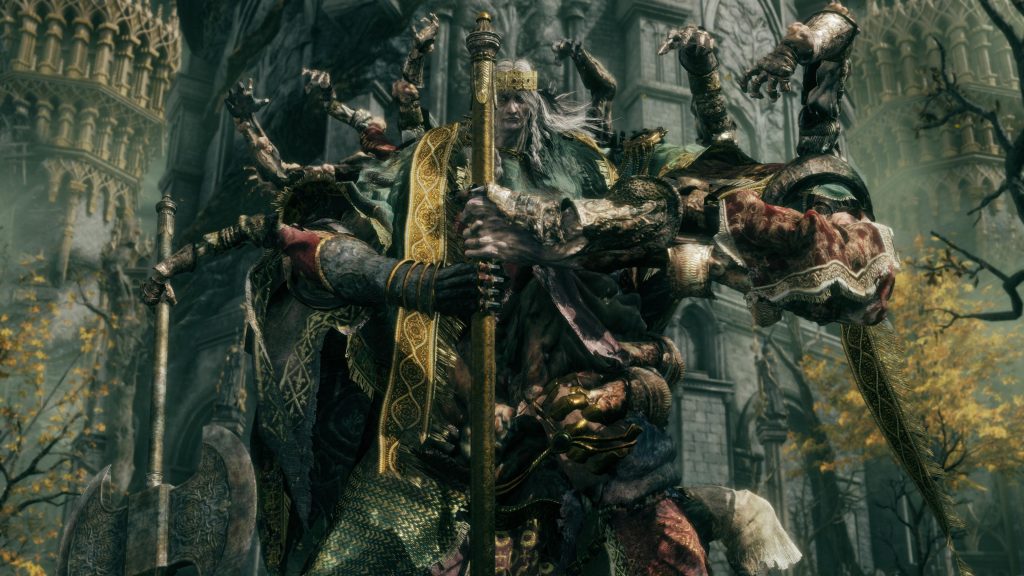
With its hauntingly beautiful epic fantasy direction, the art-style of Elden Ring impressed me, but the graphical aspects don’t quite bring that level of polish and ‘wow’ that the recent Demon’s Souls PS5 remake brought. It’s certainly an advancement on what Bloodborne, Dark Souls 3 and Sekiro all brought to the table, but because it shares a lot of DS3’s aesthetic especially (weapons, animations, etc) it may not be the leap into new territory that some players expect.
Like many cross-generation titles on PlayStation 5 and Xbox Series X, Elden Ring offers additional benefits like minimal loading times and the option to switch between ‘Resolution’ (better image quality) and ‘Performance’ (better frame-rate) modes. While Resolution mode certainly livened up many of the scenic routes with prettier grass, skylines and monsters and an up-to-4K dynamic resolution, I preferred the latter for smoother combat. Unfortunately, many open-world areas dense with activity frequently dip below the 60fps target before stabilizing. Later patches may optimize things, but if you intend to play day one, it’s best to be prepared for some potentially disappointing and choppy moments. If there’s one area that falls short, it’s here.
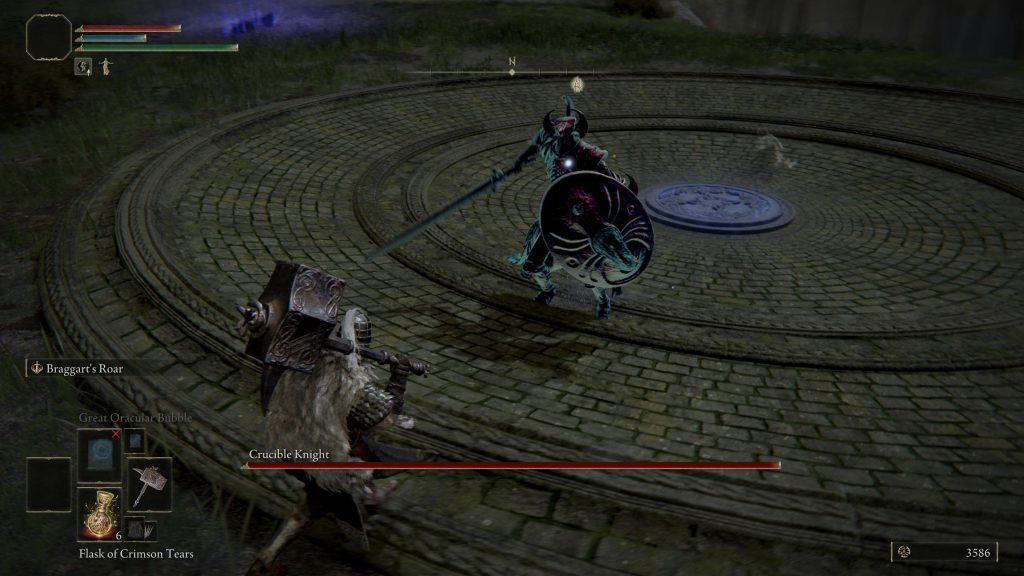
On the topic of bugs, some FromSoftware games have contained a few crazy glitches or unintentional obstacles, but Elden Ring was mostly devoid of more serious issues and I only saw a few silly things. Certain enemies later in the game would stretch into texture-less blobs when the ragdoll systems collided with the environment, resulting in some unintentional (but equally terrifying) horror, but otherwise I found nothing affecting key elements like progress and stats in a negative way.
The Final Verdict
Elden Ring, oh, Elden Ring.
FromSoftware’s first foray into open-world environments combined with their signature hand-crafted world-building and level design is, in my time with the game, a successful one.
With some of the most engaging and dynamic combat and customisation systems on offer and the exploration aspect amplified by a huge world filled with meaningful content, the tried and true ‘Souls-like’ formula is elevated to new heights. There’s a whole other layer of co-operative and competitive multiplayer systems beneath the surface I couldn’t test fully during the review period; watch out for our future updates to hear the verdict on how it stacks up to the rest of the game.
In short, Elden Ring is a must play action-RPG for both hardcore fans, and any newcomer who is up for a serious challenge, and the rewards that come from dying, and trying again. And again.
Game Details
Primary Format – Games – Microsoft Windows, PlayStation 5, PlayStation 4, Xbox Series X | S, Xbox One
Game Genre – Action role-playing game
Rating – MA15+
Game Developer – FromSoftware
Game Publisher – Bandai Namco Entertainment
